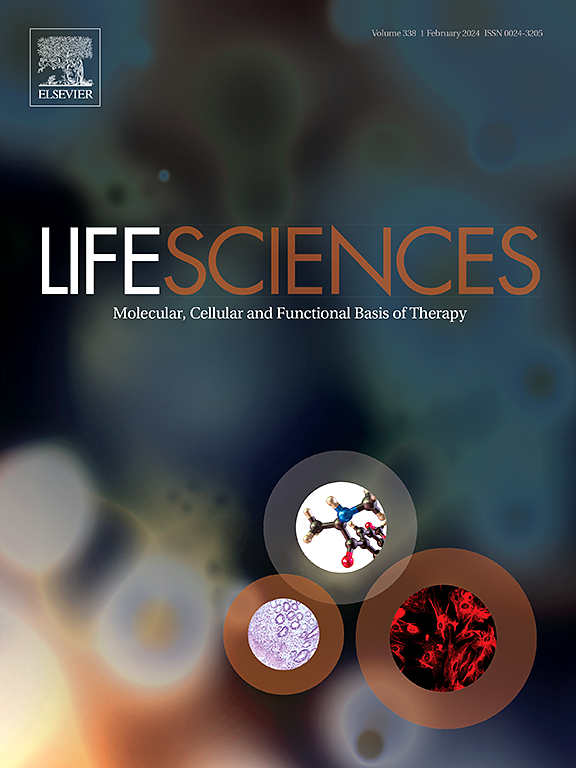多形性胶质母细胞瘤的免疫学挑战与机遇:从免疫系统视角看问题。
IF 5.2
2区 医学
Q1 MEDICINE, RESEARCH & EXPERIMENTAL
引用次数: 0
摘要
多形性胶质母细胞瘤(GBM)又称 IV 级星形细胞瘤,是最常见、最致命的脑肿瘤。它的预后很差,存活率很低。GBM 细胞的免疫逃逸机制有助于它们抵抗先进的多模式疗法。在生理平衡状态下,脑星形胶质细胞和小胶质细胞会抑制感染,并将潜在的病原体清除出系统。然而,在癌症等严重病理情况下,免疫反应无法清除突变和快速过度增殖的大脑肿瘤细胞。恶性细胞与免疫细胞的相互作用以及肿瘤的免疫抑制环境使其得以避免和清除。充分的证据表明,免疫疗法能有效解决这些难题。本综述将讨论 GBM 细胞如何抑制和躲避免疫系统。其中包括 MHC 分子表达的改变以及 PD-L1 和 CTLA-4 免疫检查点的过度表达。在没有共同刺激的情况下,这些变化会诱发效应 T 细胞耐受和过敏。综述还涉及 MDSCs、TAMs、疱疹病毒进入介质和人类巨细胞病毒蛋白如何降低针对胶质母细胞瘤的效应免疫反应。后一部分讨论了市场上现有的或正在进行临床试验的各种疗法,这些疗法围绕着对抗现有多模式疗法的抗药性展开。最近的趋势表明,有多种单克隆抗体和基于肽的疫苗可用于克服 GBM 细胞隐藏的免疫逃避技术。考虑到这些免疫逃避的特征,免疫疗法的战略性发展可能有助于设计出一种疗法,这种疗法可能被证明能有效杀死 GBM 细胞,从而提高受 GBM 影响的患者的总体生存率。本文章由计算机程序翻译,如有差异,请以英文原文为准。
Immunological challenges and opportunities in glioblastoma multiforme: A comprehensive view from immune system lens
Glioblastoma multiforme (GBM), also known as grade IV astrocytoma, is the most common and deadly brain tumour. It has a poor prognosis and a low survival rate. GBM cells' immunological escape mechanism helps them resist advanced multimodal therapy. In physiological homeostasis, brain astrocytes and microglia suppress infections and clear the potential pathogen from the system. However, in severe pathological conditions like cancer, the immune response fails to eliminate mutated and rapidly over-proliferating GBM cells. The malignant cells' interactions with immune cells and the neoplasm's immunosuppressive environment enable the avoidance and their clearance. Immunotherapy efficiently addresses these difficulties, as shown by sufficient evidence. This review discusses how GBM cells inhibit and elude the immune system. These include MHC molecule expression alteration and PD-L1 and CTLA-4 immune checkpoint overexpression. Without co-stimulation, these changes induce effector T-cell tolerance and anergy. The review also covers how MDSCs, TAMs, Herpes Virus Entry Mediators, and Human cytomegalovirus protein decrease the effector immune response against glioblastoma. The latter part discusses various therapies that are available in the market or under clinical trials which revolves around combating resistance against the available multimodal therapies. The recent trends indicate that there are various monoclonal antibodies and peptide-based vaccines that can be utilized to overcome the immune evasion technique harbored by GBM cells.
A strategic development of Immunotherapy considering these hallmarks of immune evasion may help in designing a therapy that may prove to be effective in killing the GBM cells thereby, improving the overall survival of GBM-affected patients.
求助全文
通过发布文献求助,成功后即可免费获取论文全文。
去求助
来源期刊

Life sciences
医学-药学
CiteScore
12.20
自引率
1.60%
发文量
841
审稿时长
6 months
期刊介绍:
Life Sciences is an international journal publishing articles that emphasize the molecular, cellular, and functional basis of therapy. The journal emphasizes the understanding of mechanism that is relevant to all aspects of human disease and translation to patients. All articles are rigorously reviewed.
The Journal favors publication of full-length papers where modern scientific technologies are used to explain molecular, cellular and physiological mechanisms. Articles that merely report observations are rarely accepted. Recommendations from the Declaration of Helsinki or NIH guidelines for care and use of laboratory animals must be adhered to. Articles should be written at a level accessible to readers who are non-specialists in the topic of the article themselves, but who are interested in the research. The Journal welcomes reviews on topics of wide interest to investigators in the life sciences. We particularly encourage submission of brief, focused reviews containing high-quality artwork and require the use of mechanistic summary diagrams.
 求助内容:
求助内容: 应助结果提醒方式:
应助结果提醒方式:


